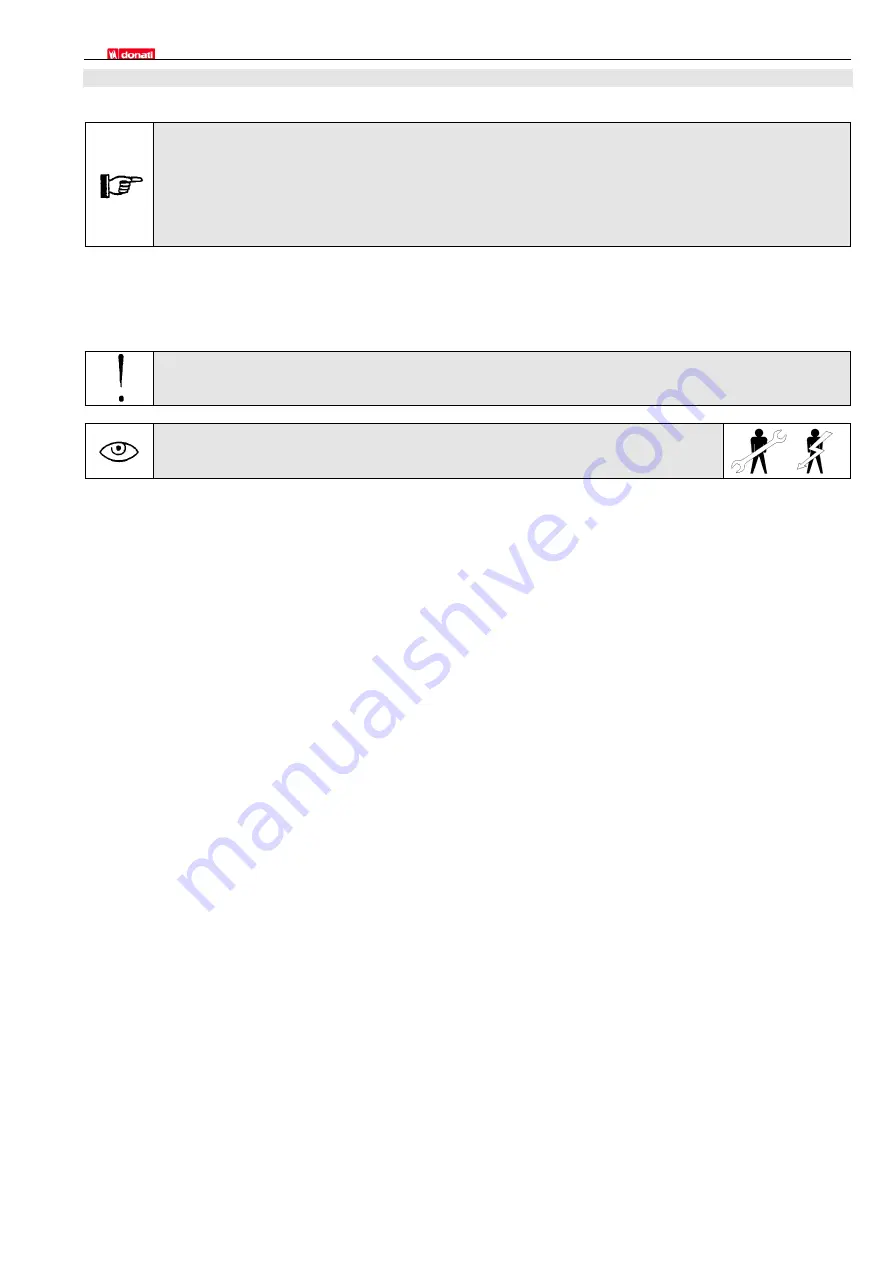
DONATI SOLLEVAMENTI S.r.l. - Via Quasimodo,17 - 20025 Legnano (MI) - Tel. 0331 14811 - E: [email protected]
27
4.4.3 Testing the “DGT” drive units and beams – getting ready for operation
•
“DGT” drive units and beams are thoroughly tested at the Manufacturer’s production
facilities to ascertain their performance and operating response. However, these tests must
be repeated once the installation is complete, in order to guarantee optimal and safe
operating performance for the components in their installation.
•
The test phases comprise a precise sequence of operations, which, as described below,
must be accurately respected by technicians conducting the tests.
•
After having conducted operating tests “on empty,” proceed with the dynamic test; these tests are carried out
with weight masses corresponding to the equipment’s nominal lifting capacity, increased by the overload
coefficient 1.1 (load equal to 110% of the nominal load). Static tests are conducted with an overload coefficient
of 1.25 (load equal to 125% of the nominal load).
All tests must be conducted in the absence of wind.
Proceed with testing the “DGT” drive units or beams as follows:
•
Empty performance tests:
•
switch on the power switch
•
set the emergency stop button to the "enable operation" position
•
press the "operation/alarm" button (if available)
•
verify the “forward/reverse” sliding function
•
in the case of movements at two speeds, verify their operability
•
check the operation of the motor brakes in their “forward/reverse” movements
•
check the operation of the electrical limit strokes in their “forward/reverse” movements
•
Dynamic test:
•
prepare suitable masses for loading tests equal to:
nominal capacity x 1.1
•
lift the load and check for proper “forward/reverse” sliding operation, making certain there are no irregular
noises, obvious deformations or yielding of the structure
•
in the case of movements at two speeds, verify their operability
•
verify the system’s operation in "emergency stopping" conditions. Sliding functions must stop in the shortest
time and space possible, without irregularities, swerving, dangerous oscillations, etc., or loss of stability.
•
check braking and stopping spaces during sliding phases. For a mass moving at a typical speed of 40
m/min, the amplitude of these spaces can indicatively be estimated at between 1.5 and 2 m, without the
insurgence of consistent load oscillations.
•
Static test:
•
lift the load used for the dynamic tests, stopping it in a suspended position at a height of 50 cm, then
gradually apply masses onto it until reaching an overload value equal to 25% of the maximum nominal
capacity.
•
leave the load suspended for a test time of no less than 10 minutes.
•
following the test, check for the absence of obvious deformations or structural yielding.
















































